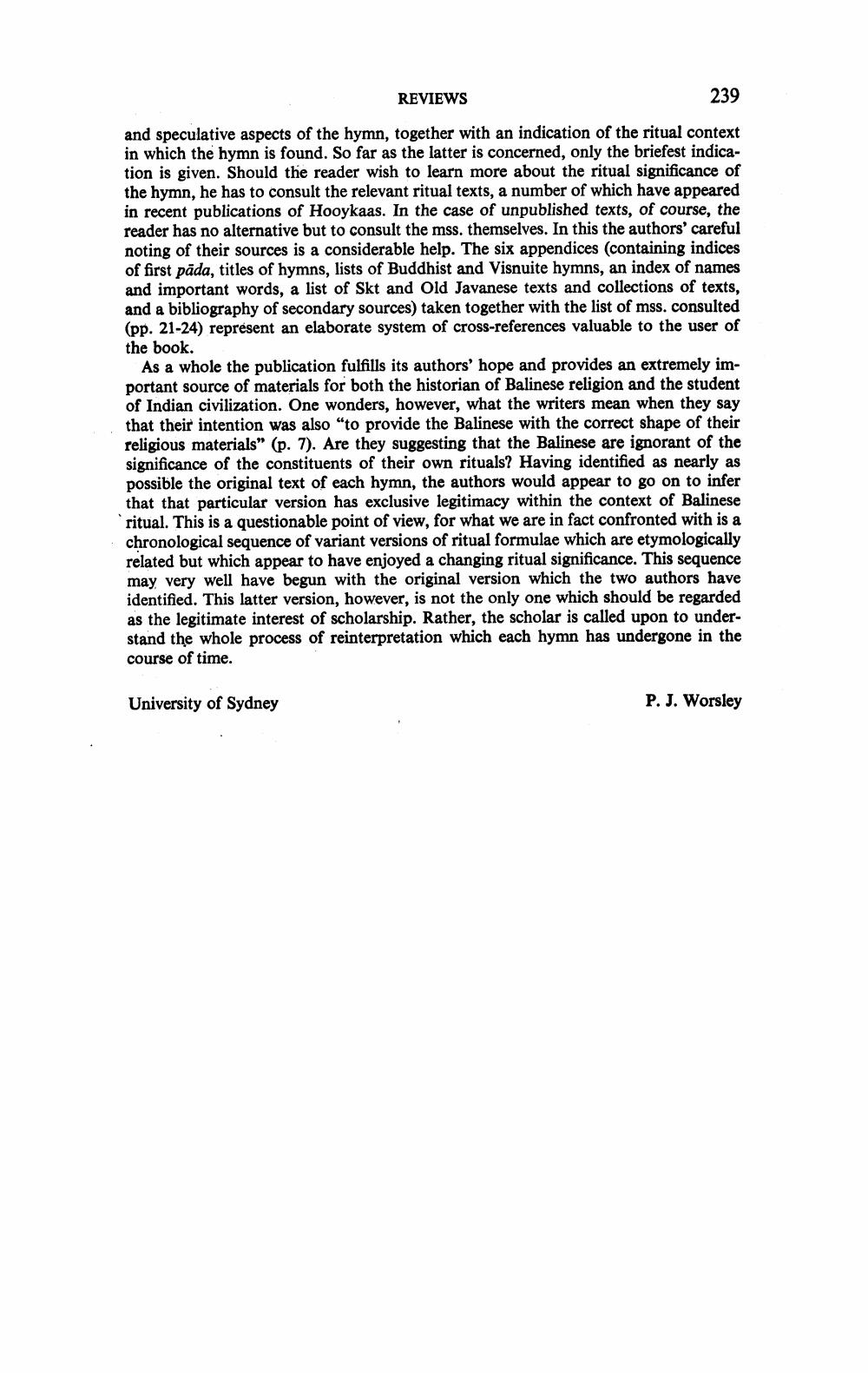________________ REVIEWS 239 and speculative aspects of the hymn, together with an indication of the ritual context in which the hymn is found. So far as the latter is concerned, only the briefest indication is given. Should the reader wish to learn more about the ritual significance of the hymn, he has to consult the relevant ritual texts, a number of which have appeared in recent publications of Hooykaas. In the case of unpublished texts, of course, the reader has no alternative but to consult the mss. themselves. In this the authors' careful noting of their sources is a considerable help. The six appendices (containing indices of first pada, titles of hymns, lists of Buddhist and Visnuite hymns, an index of names and important words, a list of Skt and Old Javanese texts and collections of texts, and a bibliography of secondary sources) taken together with the list of mss. consulted (pp. 21-24) represent an elaborate system of cross-references valuable to the user of the book. As a whole the publication fulfills its authors' hope and provides an extremely important source of materials for both the historian of Balinese religion and the student of Indian civilization. One wonders, however, what the writers mean when they say that their intention was also "to provide the Balinese with the correct shape of their religious materials" (p. 7). Are they suggesting that the Balinese are ignorant of the significance of the constituents of their own rituals? Having identified as nearly as possible the original text of each hymn, the authors would appear to go on to infer that that particular version has exclusive legitimacy within the context of Balinese ritual. This is a questionable point of view, for what we are in fact confronted with is a chronological sequence of variant versions of ritual formulae which are etymologically related but which appear to have enjoyed a changing ritual significance. This sequence may very well have begun with the original version which the two authors have identified. This latter version, however, is not the only one which should be regarded as the legitimate interest of scholarship. Rather, the scholar is called upon to understand the whole process of reinterpretation which each hymn has undergone in the course of time. University of Sydney P.J. Worsley




